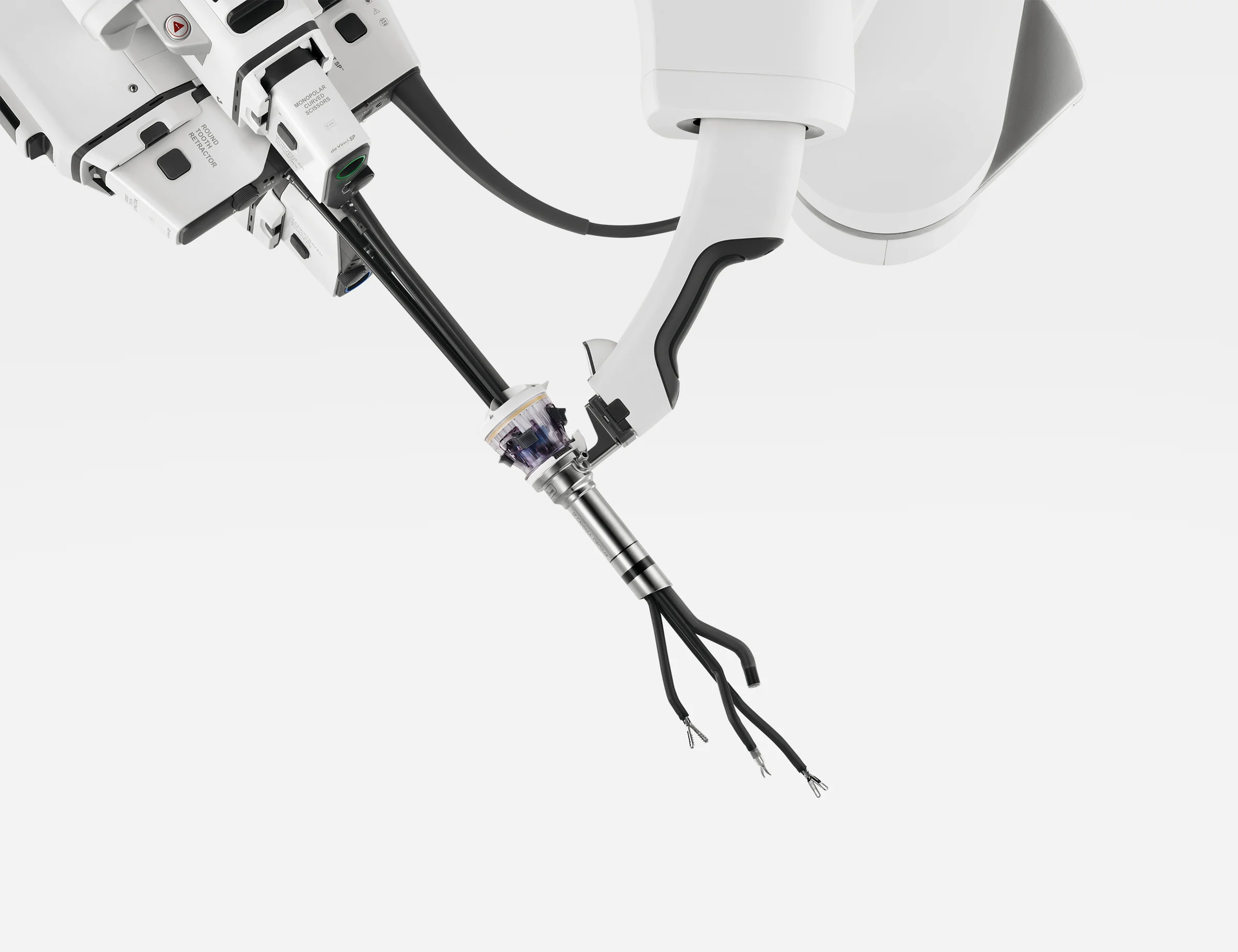










Minimally Invasive Surgery
Minimally Invasive Surgery
minimally invasive surgery
Successful surgery relies greatly on the patient’s natural healing process. Surgery has always required the surgeon to gain access to the patient’s internal tissues and organs. In open surgery, this is enabled by creating a long incision -- through otherwise healthy tissue -- large enough to allow manual access and line of sight. These open surgeries and long incisions can be physically traumatic to patients – and if their bodies can’t take the trauma, they may not be candidates for the procedure. In comparison, MIS enables surgeons to access the required tissues and organs in the body with minimal disruption to healthy tissue via much smaller incisions. While there are many forms of MIS, from traditional “straight stick” manual laparoscopic tools, to our intuitively controlled, robotic “hands and eyes,” one purpose remains constant through all MIS: a minimally invasive approach to surgical intervention and the pursuit to heal while doing minimal harm.

Surgery From the Console
Surgery From the Console
surgery from the console
Seated at the ergonomic da Vinci console, the surgeon has 3D high-definition (HD) vision of the surgical field, with magnification 10x greater than the human eye. Intuitive hand controls allow the surgeon to operate with enhanced precision, dexterity and control, using tiny wristed instruments that bend and rotate far greater than the human hand.
The da Vinci Surgical System’s unique human to machine synchronization – called “following” – fosters a state of proprioception, a sense of the system being an extension of the surgeon’s body. Via this model, the surgeon operates from a comfortable seated position with steady, natural motion and control.

One Incision...or No Incision
One Incision...or No Incision
One incision…or no incision.
Many MIS procedures require intricate work within a constrained area. This is where the da Vinci SP system excels – delivering fully-wristed surgical instruments and the first fully-wristed endoscope through a small, one-inch access port. Some surgical procedures are especially challenging from an access perspective. With the instruments and camera consolidated in one arm, the da Vinci SP system can reach anywhere within 360° from one port placement - helping the surgeon achieve broad versatility of access.

Designing with Intention.
Designing with Intention.
Intention in design
A key principle at Intuitive is to design with intention. This practice leads us to a result where every detail has purpose and function, and every feature is a message to our end user. Anything not meant to convey meaning or function is designed to “disappear” or become background to what you see, touch and feel on the product.
”Intention” is a discussion about how everything fits together, about what we draw attention to in the user experience and what we don’t. Developing a cultural definition of this helps us drive hierarchies and composition across the product experience. Relentless attention to the intention of design ultimately leads to a refined language where simplicity and clarity becomes finally possible for such a complex and technological product.

DAVINCI systems
DAVINCI systems
its a wonderful life
At the end of a long and challenging project, one rarely gets a chance to see what might have happened if they weren’t involved - but in this case we do. The system on the left is the original 510k approved version of the SP we started with - developed over 10 years. The image on the right is the evolved system after user-centered design principals were applied. The process to move things from here to there was an incredibly heavy lift for all of those involved - but it was accomplished within a comparatively short 4 year time-frame. The difference is striking on a visual level, but the real story is that so much had to be reworked and re-engineered - guided by the desire to eliminate complexity, reduce steps and improve functionality across the system.

Hands On
Hands On
hands on
Every component was built and evaluated in a practical hands-on manner. Often starting with paper, foam core and clay then moving into 3D print for the details.

Copy of Placeholder1
Copy of Placeholder1
GETTING IT RIGHT
Design cycles are long, spanning over many iterations and many years. Prototypes are evaluated and refined through a rigorous validation and verification process.

Hands On
Hands On
Making it
Developing an ID competency in the company required that we get to know our suppliers well. This is a different world from the global high-volume manufacturing world many of us are used to. Over the years, my team discovered that elevating the cosmetic fit and finish of these products is a process that will never end.

Copy of The process of creating a new familiar
Copy of The process of creating a new familiar
in use
Dr Kaouk performs the first da Vinci SP prostate surgery in the US.

Placeholder1
Placeholder1
pushing further
I would like to recognize the other designers I had the pleasure of collaborating with on various parts of the system:






















